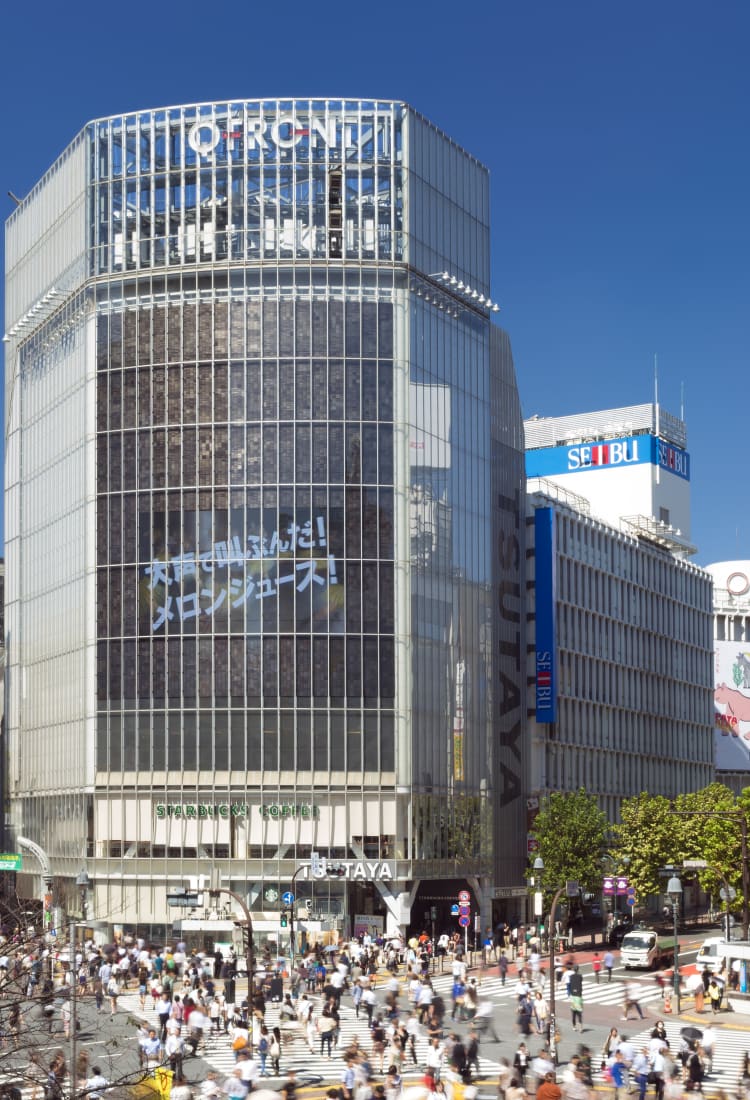

TOKYO Shibuya & Shimokitazawa Stroll through Shibuya and Shimokitazawa to experience both the ultramodern and the retro
Stroll through Shibuya and Shimokitazawa to experience both the ultramodern and the retro
If you're looking for trendy cafes, live music, and shopping for Japan-only goods, these popular pockets of Tokyo provide plenty to do but via different angles.
While Shibuya is arguably Tokyo's main shopping hub for new and modern items, Shimokitazawa offers the chance for some retro and antique bargains.
Don't Miss
- Watching the world fly by at Shibuya Crossing
- Unearthing thrift store gems in Shimokitazawa's many boutiques
- Soaking up the music at historic live venues, nightclubs and record stores
How to Get There
Shibuya Station and Shimokitazawa Station are connected by the Keio Inokashira Line.
Shibuya is accessible from the JR Yamanote Line as well as most of Tokyo's major train and subway lines. From Shibuya , the express Keio Inokashira train will take you to Shimokitazawa in less than five minutes.
Quick Facts
Once a farming town, Shimokitazawa is now home to Tokyo's indie film, music, and theater culture
With up to 2,500 people crossing every signal change, Shibuya Crossing is the busiest in the world
Shibuya's station front is home to a statue of Hachiko, Japan's most famous dog

Unlikely beginnings
Both the neighborhoods underwent significant changes to become the city hubs they are today. The laid-back corner of Shimokitazawa was once an agricultural town, which can still be seen in its narrow, pre-automobile streets.
Thanks to its close proximity to Shibuya and lower living costs, Shimokitazawa became popular with young families and students after the Great Kanto Earthquake of 1923 and especially after World War II. Right after the war, it was home to a marketplace for American soldiers, creating a hotspot for young, Western culture.
As Shimokitazawa was going through a period of social and cultural evolution, Shibuya was doing the same. A Tokyo train stop since 1885, Shibuya became the main station for the Tokyu Toyoku line's route to Yokohama in 1927. Now the Den-en-toshi Line, this new connection established the area as one of the city's major transport and economic hubs. Today it's the second-busiest station in the world after Shinjuku .

Go digging in thrift store paradise
If Harajuku and Omotesando are the centers of fashion's cutting-edge future, then Shibuya and Shimokitazawa are home to its present and past. Shibuya's mega shopping centers like the iconic 109 and brand-new Hikarie stock everything being worn by the young and trendy, while also offering a number of well-curated secondhand shops and outlets. Look out for independently run stores like The Sun Goes Down to find well-priced one-off pieces.
If you have a love for retro, bargain hunting and antiques, Shimokitazawa has more thrift stores than you could see in a single day. Home to a number of chain outlets like Flamingo and Chicago, Shimokitazawa also has great deals at New York Joe Exchange or the 700-yen flat-priced Stick Out. You'll also find some of Tokyo's best curated Western vintage at Haight & Ashbury. The streets of Shimokitazawa are awash with independent, niche and very comprehensive secondhand fashion outlets. The hardest thing is knowing where to begin.

Music for every taste
For secondhand records, both neighborhoods rival one another in terms of selection and price. While Shimokitazawa has the smaller, more selective secondhand record outlets like Flash Disc Ranch and Disc Shop Zero, Shibuya has mega stores like Recofan and DiskUnion. Most stores cover a variety of genres and formats like CD, vinyl, DVD and cassette so if you're chasing that rare limited-run picture disc, you should spend some time hunting around these areas.
For the best in new music, Shibuya is also home to the Tower Records flagship store.


Experience the many sides of Tokyo nightlife
From DJs to live bands, on any given night Shibuya and Shimokitazawa are putting on a music performance to suit your tastes and get you dancing.
Shimokitazawa , along with Koenji, is home to many live music venues. Small, more rock-focused dive bars with eclectic lineups, like Club 251, Garage, and Era, populate the area, but the main space is Shimokitazawa Three, which hosts shows by both new upcoming names and local legends.
If you're more into clubbing and electronic music, Shibuya is your destination. The main nightclub capital of Tokyo, Shibuya's venues, like Womb, Contact and Sound Museum Vision, see big-name acts and unique one-off parties all-year-round.
Both areas also have ample dining, bars, karaoke and theaters.






























































